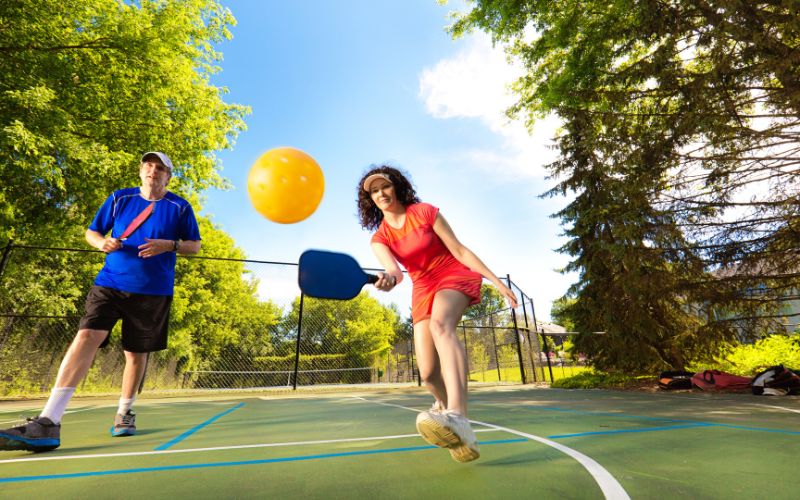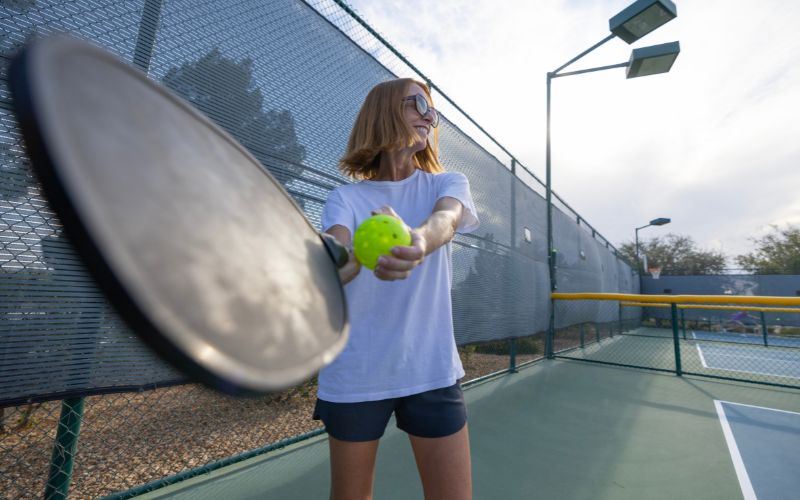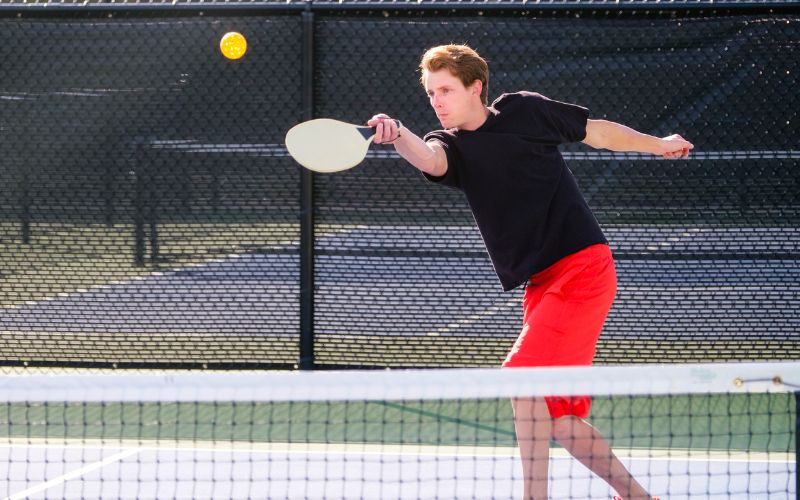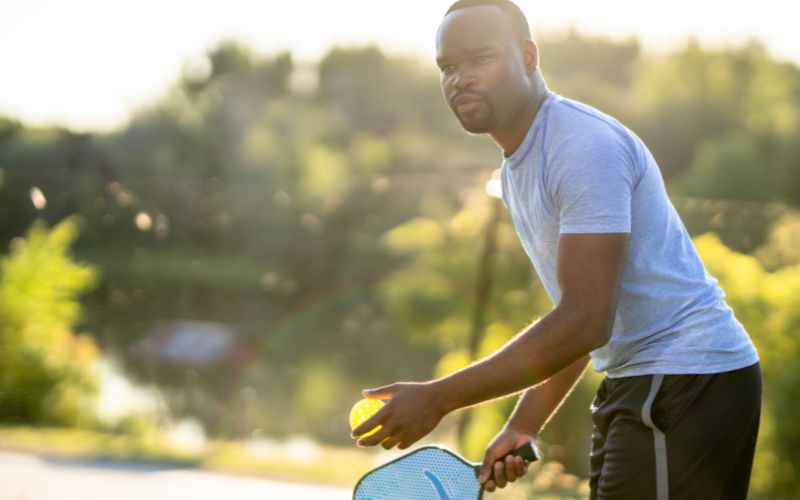Pickleball, the beloved sport that combines elements of tennis, badminton, and table tennis, has garnered a passionate following. It’s a game of strategy, finesse, and precision. While it’s generally known for its friendly and welcoming atmosphere, there are rules in place to ensure fair play. In this article, we will explore the world of illegal pickleball serves, shedding light on the key rule violations that players should be aware of.
What Is An Illegal Pickleball Serve?
The serve is one of the fundamental elements in pickleball. It initiates the point, and a well-executed serve can set the tone for the entire game. However, like any sport, pickleball has specific rules that govern how a serve should be executed. An illegal pickleball serve refers to any serve that violates these rules, giving the serving player an unfair advantage or disrupting the integrity of the game.
Illegal Serves in Pickleball
Understanding the various aspects of an illegal serve is crucial for any pickleball player. Let’s delve into the specific rule violations that can occur during a serve.
Overhand Stroke
The way a serve is executed is a fundamental aspect of the game, and there’s a significant difference between pickleball and tennis in this regard. While the overhand stroke is a common sight on the tennis court, it’s a clear departure from the norm in pickleball.
Pickleball serves are characterized by their underhand motion, creating an upward arc as the ball is sent across the net. This underhand technique is not just a matter of tradition; it’s an essential component of the game’s rules and spirit. It plays a crucial role in maintaining fairness and consistency within the sport.
Using an overhand stroke during a pickleball serve is akin to attempting to serve a tennis ball in pickleball – it’s a violation of the established rules. This prohibition isn’t meant to be a hindrance but rather a measure to ensure that all players start on an equal footing.
The underhand serve, with its upward motion, helps level the playing field and prevents players from gaining an unfair advantage. It’s not about restricting players; it’s about maintaining the core principles of pickleball, where strategy, agility, and placement matter more than brute force.
However, it’s essential to note that while an overhand stroke is prohibited during the serve, it can be a legitimate and effective technique during other aspects of the game. In rallies and volleys, players often use overhand strokes to control the ball or add spin to it. It’s a skill that comes in handy when responding to fast-paced shots or when strategically placing the ball in difficult positions for opponents.
Serving Above Waist Level
One of the fundamental tenets of any sport is ensuring that all players have a level playing field. The rule that dictates that serves must be made below waist level is in place to maintain a consistent and fair environment for all players. It prevents individuals from using an elevated serve as a means to gain an unfair advantage. In essence, it ensures that everyone starts from the same baseline, contributing to the overall fairness of the game.
Allowing serves above waist level could lead to an excessive amount of power being incorporated into the serve. This could potentially make it very challenging for the receiving player to respond effectively.
A Paddle Head Above The Wrist.
In pickleball, the rules governing the position of the paddle during a serve are quite specific, and one essential aspect is ensuring that the “paddle head” remains below the wrist. Imagine the wrist as a pivotal point of reference. During a serve, it’s not just about where the handle of the pickleball paddle is in relation to the wrist, but also where the rest of the paddle face is positioned. The rule dictates that only the handle can be situated above the wrist, while the broader part of the paddle face must remain below it.
A Serve That Takes Longer Than 10 Seconds
In pickleball, once the score is announced for both the serving and receiving teams, you are allowed approximately 10 seconds to perform your serve. If the serve exceeds this time limit, it is considered illegal to serve.
In doubles pickleball, the score includes the server number, but regardless of the pickleball format you’re engaged in, the 10-second rule remains in effect.
Avoiding the Kitchen
In pickleball, serving entails more than just clearing the net; it also involves avoiding the kitchen area. The kitchen, a no-volley zone, extends 7 feet on both sides of the net. If your serve lands within the kitchen on the opposing team’s side, it’s regarded as a fault by the server, making it an illegal move.
Furthermore, it’s essential to note that the kitchen includes not only its area but also the kitchen line. So, if your serve hits the line, it still constitutes a server fault.
Standing Ahead of the Baseline
To avoid issues during a serve, the server is required to position themselves behind the court baseline. Any instance of the server standing in front of it is regarded as a fault.
Hitting the Ball Away From the Adjacent Service Box
Just like in tennis, a serve in pickleball is considered valid only when the ball lands in the neighboring service box. If the ball touches down anywhere else, the serve is deemed illegitimate, and your turn to serve concludes.
Legal Pickleball Serve
Chainsaw Serve
The chainsaw serve is a technique in which the player spins the ball against the paddle just as the ball is thrown for the serve. While it gained widespread popularity in games during 2021, it was officially prohibited in the rule revision of 2022. Consequently, the chainsaw serve is now classified as an illegal serve.
Backhand Serve
In pickleball, you have the flexibility to choose between a backhand or forehand serve, provided that you strictly adhere to the other serving regulations. However, it’s worth noting that executing a backhand serve can be challenging in terms of rule compliance. It’s not impossible, but it demands a high level of proficiency and significant practice. Therefore, it’s advisable to avoid using a backhand serve, especially in tournament settings, unless you are exceptionally skilled and experienced in its execution.
Serving Sideways
In pickleball, serving sideways is against the rules. The regulations specify that the serving motion should involve an upward direction, making any sideways serve a fault.
Throwing the Ball in the Air
If you have experience with other net-based games, you might be familiar with the practice of tossing the ball into the air before serving. This technique may be a subject of debate, but it’s important to note that there are no regulations that prohibit it, rendering it a legal and permissible serve. Furthermore, using this method can provide some additional time for preparing your shot.
Serving Rules
The serving rules in pickleball are crucial to ensure a fair and competitive game. Here are the basic serving rules:
The Serve: The serve must be made underhand, and the paddle must contact the ball below the server’s waist (the waist is defined as the navel level). The serve is initiated from the right-hand court when the server’s score is even and from the left-hand court when the server’s score is odd.
Foot Fault: The server must keep both feet behind the baseline (the back boundary line of the court) at the time of the serve. Stepping on or over the baseline is considered a foot fault and results in the loss of the serve.
Diagonal Serving: The serve must be made diagonally across the court to the opponent’s service court. The ball must clear the non-volley zone (commonly known as the “kitchen”) and land in the opposing service court, following the correct diagonal pattern. The serve should not land in the “kitchen” or out of bounds.
Double Bounce Rule: Both the serving team and the receiving team must let the serve bounce once before attempting to hit the ball in the air. After the two bounces (one on each side), all players may play the ball either in the air or after one bounce.
Faults: A fault is called when the server fails to make a proper serve according to the rules, such as serving out of bounds, into the kitchen, or hitting the net. The server is allowed one fault per serve attempt. If a second fault occurs, it results in a side-out, and the opposing team gets the serve.
Service Order: The serving team continues to serve, alternating between players on the serving team, until they lose the rally. The first server for each side is determined at the beginning of the game and alternates throughout the game.
Let Serves: If the served ball hits the net and lands in the proper service court, it is called a “let serve.” In the case of a let serve, the server is allowed to re-serve without penalty.
Receiver’s Position: The receiving team must stand with at least one foot behind the baseline, and they must not move forward until the ball is struck by the server. Failure to comply with this rule results in a fault.
Avoiding Illegal Serves in Pickleball
Avoiding illegal serves in pickleball is crucial to maintaining fair and sportsmanlike gameplay. Here are some tips to help you avoid illegal pickleball serves:
- Stay Behind the Baseline: Ensure that both of your feet remain behind the baseline when serving. Stepping on or over the baseline during your serve is a foot fault and will result in a fault.
- Underhand Serve: Always make your serves underhand. You must strike the ball with an upward and forward motion while keeping your paddle hand and the paddle below your waist. Avoid any swinging or overhead motions, as these are not allowed in pickleball.
- Serve to the Correct Diagonal Box: Your serve should cross the net diagonally to the opponent’s service court. Make sure your serve lands within the correct diagonal box, which corresponds to the serving side and service court you are in. It should not land in the kitchen or out of bounds.
- Let Serves: If the ball hits the net during your serve but lands in the correct service court, it’s considered a “let serve.” In this case, you are allowed to re-serve without penalty. However, it’s best to aim for clean serves without hitting the net.
- Practice Your Serve: Spend time practicing your serve to ensure you have control over the height and placement of the ball. This will help you consistently make legal serves during games.
- Know the Rules: Familiarize yourself with the official pickleball rules for serving. Rules may vary slightly in different settings, so it’s essential to understand the specific rules of the venue where you’re playing.
- Receiver’s Position: Be aware of the receiver’s position. The receiving team must stand behind the baseline and should not move forward until the ball is struck by the server. Avoid serving when the receivers are not properly positioned.
- Stay Focused: Concentrate on your serve and be mindful of the rules. It’s easy to make mistakes when you’re not paying attention, so stay focused during your service.
- Stay Relaxed: Tension in your body can lead to unintentional rule violations, such as serving above the waist. Keep your body relaxed, and focus on your technique to ensure proper serves.
- Communicate: If you’re playing in a friendly or recreational setting, it’s a good practice to communicate with your opponents and ensure everyone is on the same page regarding serving rules. This can help avoid misunderstandings.
Remember that pickleball is a game that values good sportsmanship and fair play. Avoiding illegal serves is essential to maintaining the integrity of the game and ensuring an enjoyable experience for all players. If you’re ever uncertain about a specific rule or situation, don’t hesitate to consult the official pickleball rules or seek guidance from experienced players or referees.
Frequently Asked Questions
What are the consequences of making an illegal serve in pickleball?
Making an illegal serve typically results in a fault. The consequences may include the loss of the serve, a side-out, and the opposing team gaining the serve. Repeated illegal serves can lead to a loss of points or even the match.
Can you explain the “double bounce rule” in pickleball serving?
The “double bounce rule” means that both the serving team and the receiving team must let the serve bounce once on each side (i.e., one bounce on the serving side and one bounce on the receiving side) before anyone can hit the ball in the air. This rule helps ensure a fair start to each point.
Is it allowed to use an overhand serve in pickleball at any time during a game?
No, an overhand serve is not allowed in pickleball. Pickleball serves must be executed underhand, with an upward and forward motion. Using an overhand serve is a violation of the rules and is not permitted.
What happens if the served ball hits the net and lands in the proper service court?
If the served ball hits the net but still lands in the correct service court, it is considered a “let serve.” In this case, the server is allowed to re-serve without penalty.
How long do you have to complete your serve in pickleball?
In pickleball, once the score is announced for both the serving and receiving teams, you are allowed approximately 10 seconds to perform your serve. If the serve exceeds this time limit, it is considered an illegal serve. This 10-second rule applies in both singles and doubles pickleball.







